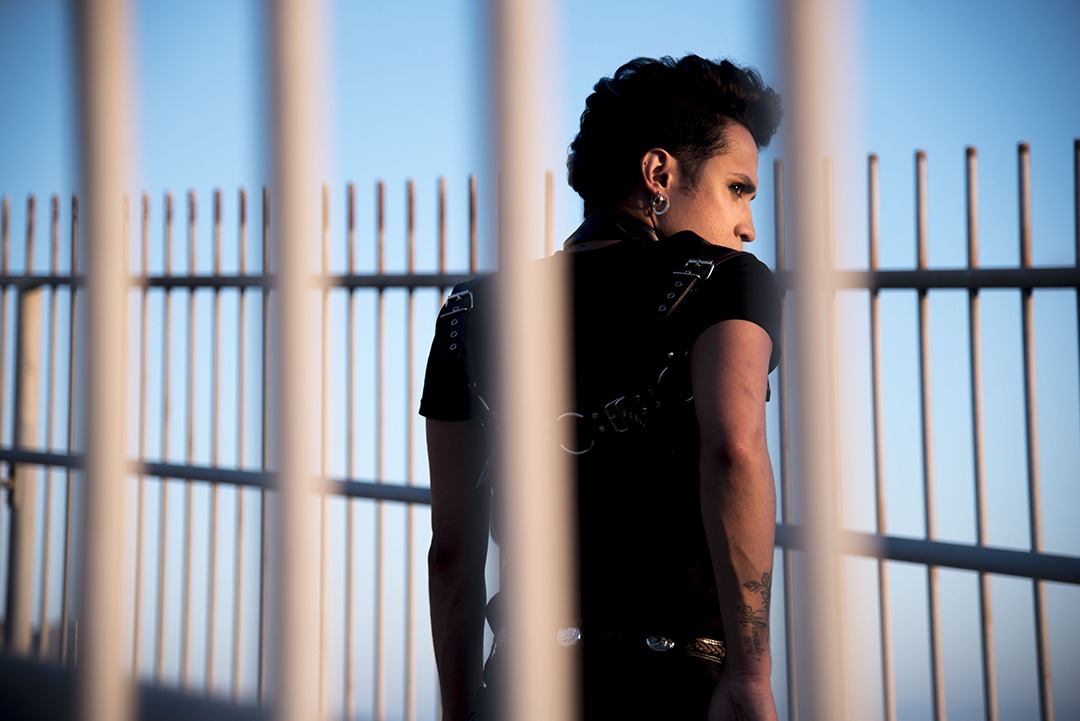When dawn broke over Greenwich Village on June 28, 1969 most New Yorker’s assumed it to be just like any other weekend. With temperatures stagnating at a humid 96 degrees, many a seasoned city dweller felt left behind in the city this weekend a bit on edge. Still, there were probably more than a few who had no idea of the events that unfolded in the pre-dawn hours of that day. Civil unrest had been on the lips of most Americans for many years.
50 YEARS OF STONEWALL
How our past is still relevant today
Words by Jeffery Hoyle
Photos by Arash Afshar
Model Adan Guerra
Antiquated laws and abuse of power
fester in sixties summer heat
Throughout much of the 1960’s the nation’s focus was on the civil rights movement helmed by the Rev. Dr. Martin Luther King. His approach of “peaceful protests” resonated with a society that was growing weary of its own exclusionary mechanisms that had been in place for several decades. Though Dr. King had been assassinated a year prior in 1968, his message of civil disobedience was still being utilized. Yet, there were others who were part of another disenfranchised section of the community who were growing tired of their plight.
Since its origin as a Dutch colony, New York State laws prohibited same-sex interactions – in some instances that included dwelling and public contact between individuals, as well as sexual conduct. It was largely due to these laws that so many in the LGBTQ community lived “double lives,” forced to find solace in gay establishments tucked into back alleys and questionable areas of the city. The Stonewall Inn was just such a place, where gay and lesbian men and women could find a sense of community and belonging.
Still, in the late 1960’s with these draconian laws still in place, the NYPD felt it was within the confines of their duties to regularly harass individuals as they entered or exited known gay establishments, or to regularly hold full on raids of gay establishments as a show of force and intimidation. As the frequency of these raids grew, so did the unrest within the LGBTQ community in the city. And shortly after 1:00am on that June morning, several brave individuals rose up, and declared that enough was enough. The concept of civil disobedience was replaced with anger and rage at years of homophobia and marginalization.
The NYPD was sure they would be able to have the uprising under control in short order. Hours later, with each tactic they tried being thwarted by bar patrons, as well as those in the area who joined in the fight, it was over…for that night. Over the next few nights, lasting for several weeks, eruptions of violence occurred. The gay civil rights movement had been born and was not going to be silent any longer.


LGBTQ Rights movement
is far from over
It has been 50 years since the Stonewall Riots, and the rights of LGBTQ people are still being fought against; simple, human rights at that. Yes, there are freedoms granted to our community like the dissolution of the military’s “Don’t Ask, Don’t Tell” policy, as well as the U.S. Supreme Court ruling in favor of the “Freedom to Marry” case. However, there are still fights to be fought until true equality can be attained. Even today, in most states, our LGBTQ brothers and sisters can be denied housing, or face termination from an employer based solely on sexual orientation.
In Indianapolis, Indiana a teacher was fired recently after 13-years of service to a Catholic high school. The teacher sued and was able to reach a settlement with the local archdiocese. In another case, a school was issued an ultimatum; fire a gay, long-time teacher with an exemplary record, or face loss of accreditation with their local archdiocese. The school decided to back the teacher and was stripped of its church accreditation. While many have cried that these instances are tantamount to a “witch hunt,” in reality it is what LGBTQ people face on a regular basis.
Let history be our guide
for the future of Pride
The struggle for equality is still a struggle. Each year, Pride celebrations are held from coast-to-coast, but often the meaning behind these celebrations gets lost. To forget the struggles and sacrifices of those who came before us make our celebration of the occasion disingenuous. It is important that we never forget the sacrifices made by brave individuals who came before us so that we can celebrate the occasion as we do. Those individuals, especially those who took part in the Stonewall Riots, formed a bridge over which we all were able to cross over to enjoy the liberties we do today.
The words of the late Marsha P. Johnson, one of the preeminent founders of the LGBTQ movement, and a pivotal figure in the Stonewall uprising are still relevant;
“How many years has it taken people to realize that we are all brothers and sisters and human beings in the human race? I mean how many years does it take people to see that? We’re all in this rat race together!”
We celebrate Pride, with pride, and recognition of those who have come before us. With a nod toward the shadows of the past, and with hope and inspiration for a brighter future on the journey we still have ahead.
Anti-Editor’s Note: Jeffery Hoyle is on the Board of Directors of the National LGBTQ Task Force. He is a friend and an amazing writer, and I sought him out as a Guest Contributor for our Ignite collection Cover Story because I knew he was the perfect one to bring the idea of “Igniting Pride” to life. We had already selected Stonewall as our creative concept for the cover shoot, and taken an artistic approach to capturing the struggle and sacrifice of the LGBTQ community in Arash Afshar’s photography. As expected, Jeffery has the grace, perspective and sensitivity needed to look at the Stonewall Riots fifty years later, and capture that same struggle and sacrifice, while still eloquently igniting us all to look toward the needs of the next fifty years.
Revekka Balancier
Editor-in-Chief
